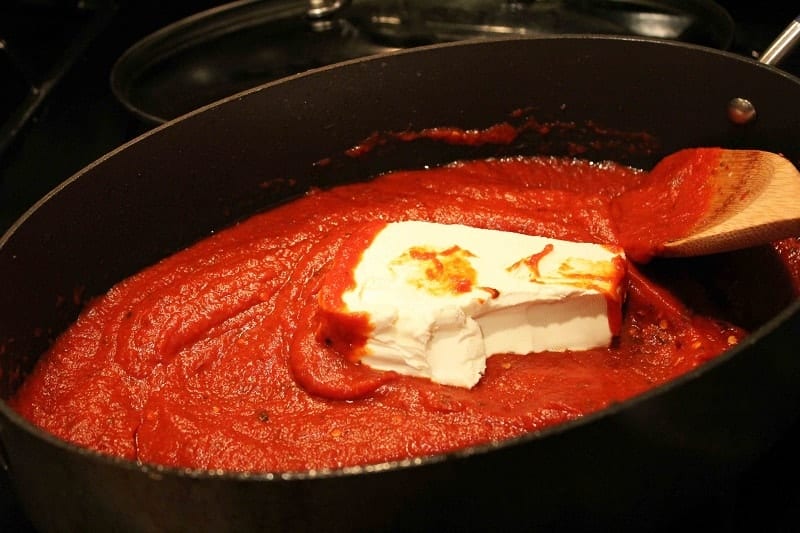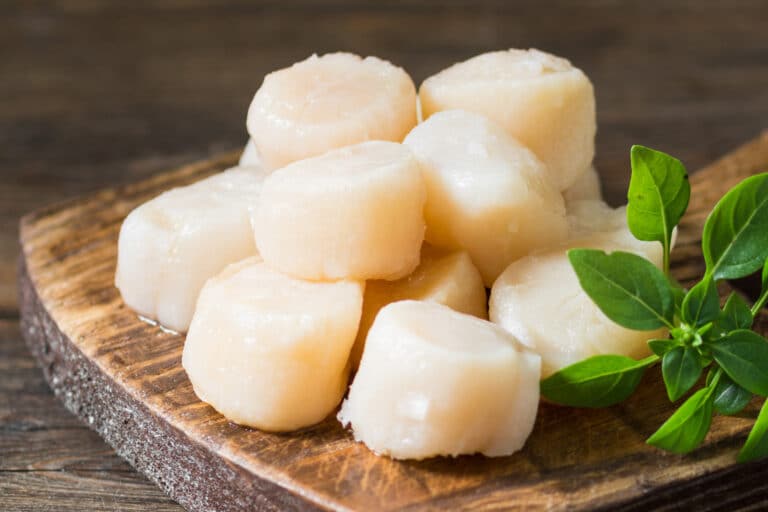How to Thicken Homemade Tomato Sauce
Homemade tomato sauce has a vivid fresh flavor that is worth it. It is the base sauce used in lots of autumn and winter comfort foods like stew, minestrone soup, and chili, and the bright, garden goodness of homemade sauce will enhance almost any tomato-based recipe.
Making tomato sauce from the scratch is a challenge but it also opens up a room of opportunities for you to explore and impress your guests. Afte blending you may at times want a thicker consistency.
Since tomatoes have a high moisture content and cooking tomatoes releases all that moisture into the sauce. However, with some easy and homemade options, you can rustle up that perfect thickness for your dishes.

Adding tomato paste
You will thicken the sauce by adding tomato paste. Store-purchased tomato paste is essentially a thick flavor filler that adds a lot of tomato solids to your sauce without adding too much excess liquid, helping you to thicken your sauce rapidly and easily.
There is, however, one downside to the use of tomato sauce. Store-purchased sauces normally come with their ingredients, seasonings, and thickeners. These additional ingredients can alter the taste of your dish, so you may get the consistency you like, but you may end up with a dish that tastes completely different!
It would be good to try a brand of tomato paste that you haven’t tried on a smaller batch before, so you’ll have an idea of what the finished dish will taste like, and whether you can change the dish.
Reduce the sauce
Some tomato purists recommend offering a little more watery sauce to the stove without the pot top. Letting tomato sauce thicken by evaporating extra liquid has some additional benefits.
The more the tomato sauce heats, the more complicated, the better, and the more delicious it gets. If your sauces have been brassy or almost rusty in the past, another hour on the stove will make this year’s batch thick enough to cover the back of your ladle and give it some rich flavor notes that you’ll love.
Next, bring the sauce to a boil, reduce the heat, and allow it to cook uncovered. Make sure to stir the sauce regularly to keep it from burning. Allowing it to simmer over low heat would allow the extra water to evaporate, resulting in a thicker sauce. Although this takes longer than most approaches, the benefit of this is that it does not affect the flavor of the sauce.
Add a thickener
Artificial thickeners and tomatoes are frequently in competition with each other. In tomatoes, the starches do not hold up to the acid. Cornstarch, potato starch, and some flours can alter the taste of tomato sauces, make lumps, or break down over time. When you add rice, arrowroot or cornstarch, first mix it in a little cold water and then use the tomato sauce instantly. All substitutes for cornstarch will act as a thickener, so you have plenty of options.
Add oil
A small amount of olive oil and a blender-style hit can help emulsify the sauce that contains the oil and other ingredients, thickening it naturally. The inclusion of some oil would also help to produce a finer texture.
Add other vegetables
No one has ever said the tomato sauce should only contain one vegetable. Mixing any ground carrots or caramelized onions will turn your one-note sauce into a symphony of flavor and make it thicker in the process. Vegetables not only improve the nutritious content of your spaghetti sauce but also add depth. You should include cabbage, celery, peppers, onions, mushrooms, or sliced tomatoes.
The taste of the sauce depends on the type of vegetable you want to add. Even, if you don’t mind a little crunch on your tomato sauce, stick to the crunchier tomatoes.
Pasta Water
After cooking pasta, you might find that the water you used was cloudy. That is the starch that comes out of the spaghetti. The remaining pasta water is a great thickening agent that you can add to the tomato sauce to help thicken it. Scoop out one cup of the pasta water before draining the pasta and set it aside to add to the tomato sauce.
Add Cornstarch
Cornstarch is easy to use, as you only need a minor amount to thicken tomato sauce. You only need one tablespoon of cornstarch for each cup of tomato sauce. Although you can apply the cornstarch directly to the tomato sauce, it’s better to add it to the slurry before applying it.
To make the slurry, combine the same amount of cold water with the cornstarch and blend well until the paste is smooth. Make sure you cook the cornstarch properly enough that you don’t have any flavor or texture of raw cornstarch in your tomato sauce.
Add mashed potatoes
If you have some extra mashed potatoes, you can use them to thicken the tomato sauce. The starch in the mashed potatoes will thicken the sauce considerably and you’ll end up with a dense, fluffy, if not sweeter, tomato sauce.
Add heavy cream
This approach is going to absolutely transform your pasta sauce. Strong cream will make the tomato sauce smooth and thick. It also softens the acidity of the tomatoes, resulting in a less conventional spaghetti sauce.
Add meat
Meat is another way to thicken the watery pasta sauce while making the sauce more savory. What you need to do is brown ground beef, ham, pork, or Italian sausage and add it to the sauce and let it cook. The more you allow your sauce to cook, the more delicious it will be.
Add bread crumbs
Apply the bread crumbs to the sauce and soak the remaining water. Bread is a natural sponge and is thus suitable to be used as an absorbent to extract the water content without altering the texture. Flour is another thickening agent that can be used to thicken sauces.
Since the breadcrumbs are predominantly made from flour, they’re perfect for thickening your red sauce. You can either buy a can of breadcrumbs or you can make your own by toasting slices of bread and crumbling them into fine crumbs. While you can note the inclusion of breadcrumbs in the texture of the sauce, the flavor doesn’t change much.
Add cheese

You should also incorporate Parmesan cheese, which also goes perfectly with spaghetti. This thickens the sauce and makes it more palatable, even though you’ve added extra pounds. Kick up the sauce with some shredded cheese.
This is a simple and easy way to thicken your pasta sauce. Since most cheeses, including parmesan, cheddar, and roman, tend to have a higher level of sodium, adding cheese will make the sauce a little salty.
Check Also: How to Make Oatmeal Last?
Add roux
Roux is used as a thickening agent in French and Cajun cuisines. Just heat the butter and apply the flour to make the roux. Specifically, melt one cup of butter in a medium-sized skillet and then add one cup of flour. Mix until the sauce is rich and creamy.
When you have made a roux, add it to the spaghetti sauce in limited quantities at a time. Bear in mind that this approach does a bit to modify the taste of your sauce. For those with a gluten allergy, substitute one of these gluten-free flours for plain flour.
Add butter
You need a lot of butter for this. What you need to do is get a cup of melted butter for each cup of sauce. Whisk the melting butter to a creamy, silky paste. Connect this to the sauce, and you’ve got the right sauce that goes perfectly for pasta and pizza.
Add nuts
If you do not like the texture and flavor of nuts, grind some almonds and add them to the sauce. This makes it dense. There were some helpful measures to thicken your homemade tomato sauce very quickly, much like a professional one.
You may also use these tricks to thicken the tomato sauce for canning. You might even try making the sauce in a crockpot, which helps to thicken it by heating it slowly.
Conclusion!
As mentioned above there is no one way to or the best way to thicken up a tomato sauce. It will depend on the consistency you want, the flavor profile you are trying to achieve, and the dish that you will use the tomato sauce on. Most people find that a combination of the methods works well for them.
First, they add a small amount of their preferred starch. Next, add a small amount of tomato paste to amp up the tomato flavor and spices. Finally, simmering the tomato sauce and allowing it to reduce to get that final desired consistency. The key is to keep tasting your tomato sauce as you go, especially if you’re adding starchy ingredients.
When you’re done, you can store your spaghetti in the fridge, freeze the sauce in a freezer container, or use the sauce right away!






